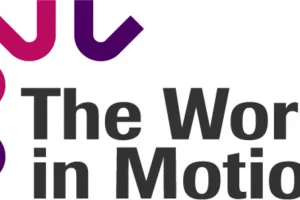CILT welcomes bold plan for London
The Chartered Institute of Logistics and Transport (CILT) welcomed the ambitious approach of the Draft Mayor’s Transport Strategy (DMTS) and wholeheartedly agrees with its high level principles. However, these commendable intentions risk being undermined unless a number of the DMTS policies are reinforced with greater rigour and resolve.
CILT believes that the DMTS should better promote policies to drive modal shift, including a focus on rapid bus links and innovative local distribution. This should be underpinned by a full commitment to crucial infrastructure projects such as Crossrail 2.
The ambitious targets for reducing car use can only be achieved with road-user charging as part of the policy mix. The Mayor could now commit to leading a London-wide system with time and distance based charges, to encourage a cleaner, and more competitive Capital.
Significant engagement is required with freight operators if we are to ensure the efficient supply chains that civilised, high density city life demands. All policies must be made mutually supportive to ensure that the intended modal shift can match the needs of London’s logistics and transport networks. Particularly, the emphasis of the DMTS should shift to improving the efficiency of the supply chain rather than regulating vehicle access, type and timings. Crucially, the Strategy should recognise that freight vehicles are rarely interchangeable between functions or sectors served.
Shifting passenger and freight to sustainable modes of transport would ensure that London’s prosperous transport networks are best utilised for their most efficient capabilities. That said, the Mayor’s Transport Strategy must also be mindful of the crucial need for coherence with Government policies such as the National Aviation Policy.
{EMBED(902523)}
Key strategic provision should also be made for the necessary protection of industrial land for future logistics and warehousing needs to provide for and propel a healthy and prosperous London.
CILT questions whether some of the ambitious targets within the DMTS are realistic, without more rigour and resolve. A number of important proposals still need further development to fully satisfy the goals. The final strategy must reflect the principles of complementary network development to best exploit all modes of transport and so fully support London’s economy and communities.
Daniel Parker-Klein, Head of Policy, CILT, says: “The DMTS contains many commendable objectives designed to meet the challenges London’s transport system faces. We do have concerns whether the DMTS plans covering a number of areas are sufficiently strong and well developed. It is hoped our review of the DMTS will allow the Mayor of London to better develop these proposals to ensure a cleaner, more efficient and thriving Capital of the UK.”
CILT believes the legacy of the Logistics can be built on, with the final strategy should commit to significant engagement with freight operators to develop solutions which help reduce congestion and protect quality of life, while ensuring reliable supply of the goods and services London depends on.
{EMBED(905943)}
Rail freight – The Mayor should re-consider policies in the DMTS that conflict with the objective of moving more freight to rail and would have severe implications for national supply chains (e.g. proposed restrictions on freight transport at night). In addition, review of the DMTS should consider how to strengthen policies to promote modal shift, including examining the case for developing and extending the use of facilities at key railheads.
Aviation – The MTS will have to be in line with National Aviation Policy which is progressing through Parliament. CILT (UK) supports the expansion of Heathrow Airport as a major contributor to London’s prosperity and its key global position as a business hub, with appropriate, specific conditions relating to road traffic, air quality and aircraft noise.
Land use planning – The final strategy should commit to protecting industrial land required both to deliver stated policies and enable the logistics sector to function efficiently. Without designated land in specific locations for warehousing, the financial and environmental cost of supplying London will increase. In addition policies to transfer freight from road to river and rail will not achieve their potential unless land surrounding wharves and railheads is protected.
Deliverability and value – It is not clear whether there is sufficient rigour, coherence and realism in the package of proposals put forward to achieve the Mayor’s aims. No evidence has been provided to explain why the measures in the DMTS would achieve the dramatic changes in travel behaviour envisaged. Nor are there are any details on the options considered and how policies were selected. The Mayor should commit to explaining the rationale for his approach in the final strategy informed by cost benefit analysis of alternative solutions.
Road user charging – CILT’s view is that ambitious DMTS targets for increased travel by sustainable modes, reductions in car trips and improved air quality can only be achieved if road user charging (including workplace parking levies) forms part of the policy mix. The Mayor should commit to taking the lead in developing and promoting a London-wide system with time and distance-based charges. The approach proposed in the DMTS, of boroughs taking the lead in their area, if they consider charging appropriate, would be complex and lack the strategic direction to have the required impact.
You can download the Full Report here – http://bit.ly/2izxns
{EMBED(905942)}




